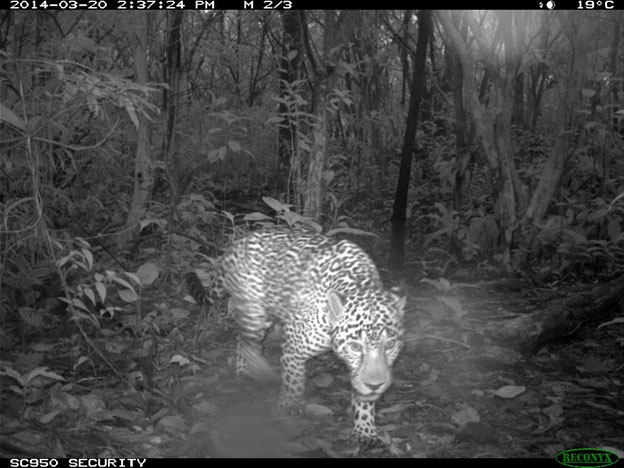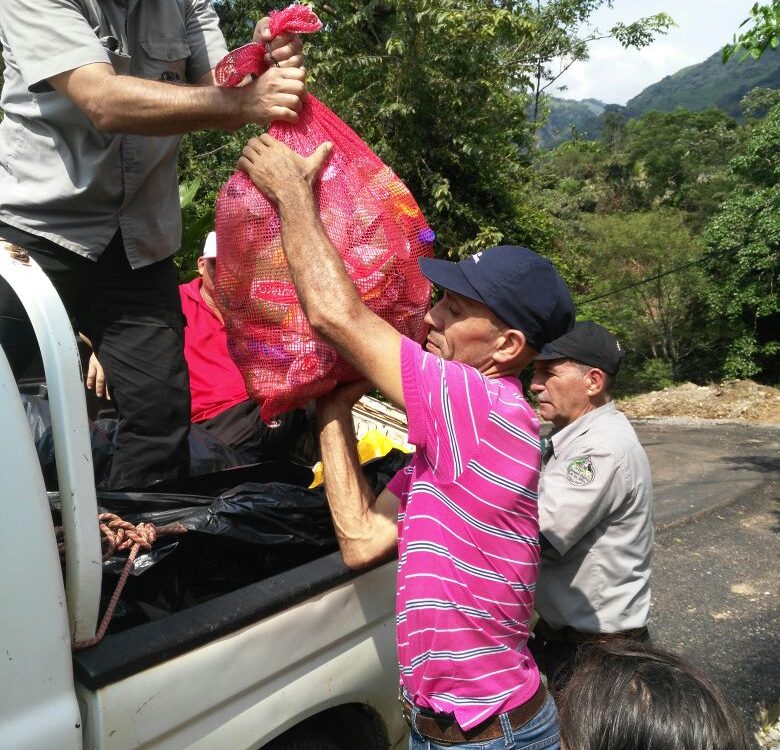
White-faced Capuchin Monkeys
7 septiembre, 2016Bajo del Tigre (“Jaguar Canyon”) received its name in 1949, when the last pair of jaguars was killed in what is now the Monteverde/Santa Elena community. At that time, homesteaders relied upon hunting to supplement the family food supply. This placed people in direct competition with jaguars and mountain lions for such mammals as deer, peccary, and tapir. Each year there were fewer animals for the jaguars to hunt.
The last pair of jaguars was confined to an area between the top of the "cliff edge" (the lower limit of what is now Monteverde) and the bottom of the canyon, trapped between the families who settled in the San Luis valley below and those in Monteverde above.

When a jaguar was observed killing a pig, eight hunting dogs were sent to chase it away, but only two dogs returned — jaguars really relish dog meat! A few days later a hunting party went down the cliff with more dogs, killed the jaguar, and carried it home. The man who had seen the pig being killed informed the hunters that they had killed the wrong jaguar, because the one he had seen was a female about to give birth. Unfortunately, the hunters were able to locate the female in her den and kill her too.
The Monteverde Conservation League is trying to preserve a large enough area to ensure that some representatives of each species will survive. We know that jaguars live in remote areas of the Children’s Eternal Rainforest (BEN), because they have been detected near our Pocosol Station using motion sensor cameras since February 2012.
Beyond the fact that jaguars are present in the BEN, we currently don’t know much more. Lots of research is needed! Good conservation management decisions should be informed by data about population size, population dynamics, ranges, size of prey populations, and other important factors.
Furthermore, as the history of Bajo del Tigre above illustrates, when large cats and humans come into contact, the felines usually wind up on the losing end. As populations of jaguars – and other large cats – begin to increase within protected areas, outreach and education to surrounding communities must increase if we are to ensure the conservation of these majestic and threatened species.
If you are interested in supporting large cat research or education/outreach in the BEN and surrounding protected areas, we invite you to contact us at lstallcup@acmcr.org.
Bajo del Tigre (“Jaguar Canyon”) received its name in 1949, when the last pair of jaguars was killed in what is now the Monteverde/Santa Elena community. At that time, homesteaders relied upon hunting to supplement the family food supply. This placed people in direct competition with jaguars and mountain lions for such mammals as deer, peccary, and tapir. Each year there were fewer animals for the jaguars to hunt.



